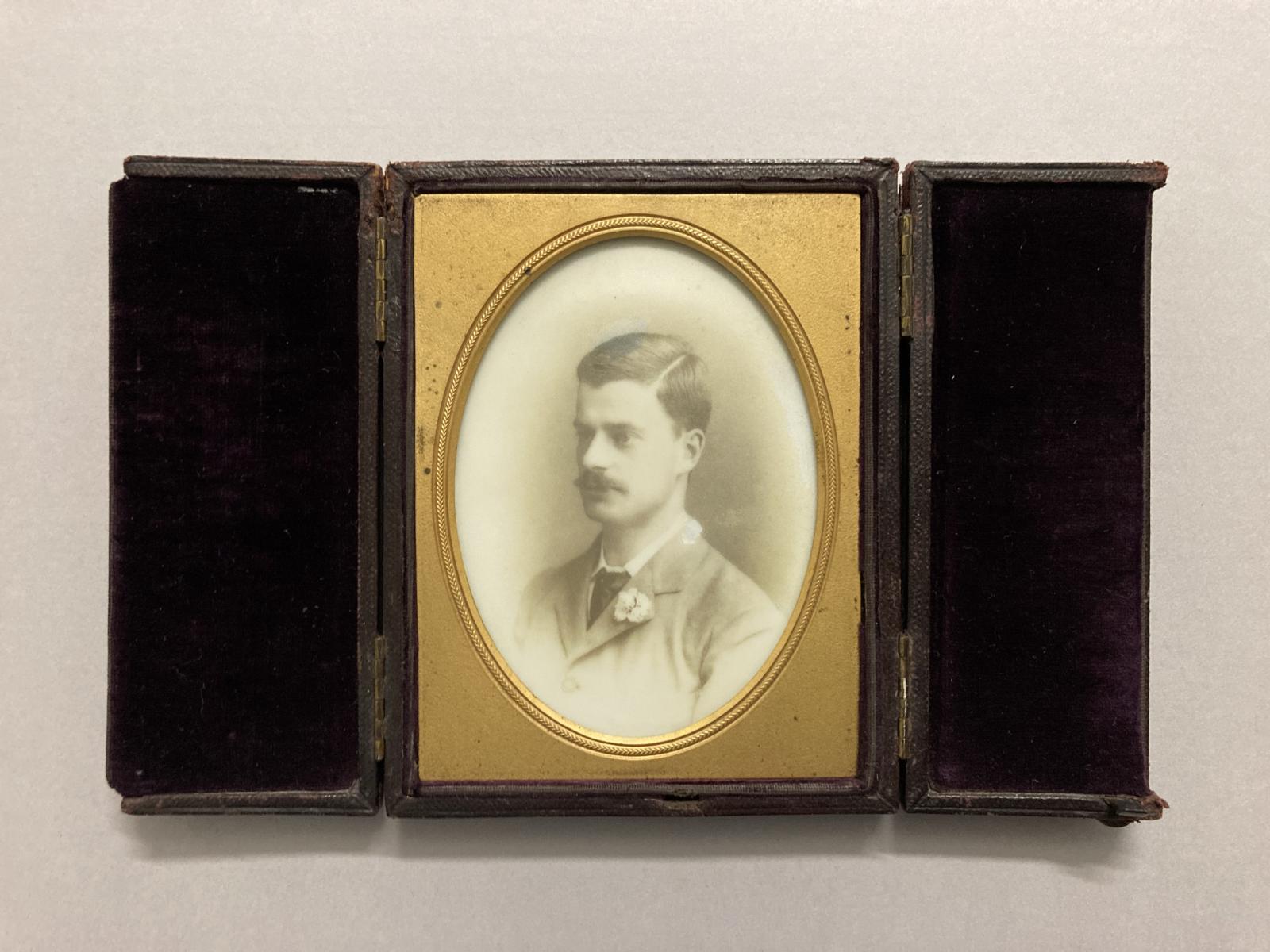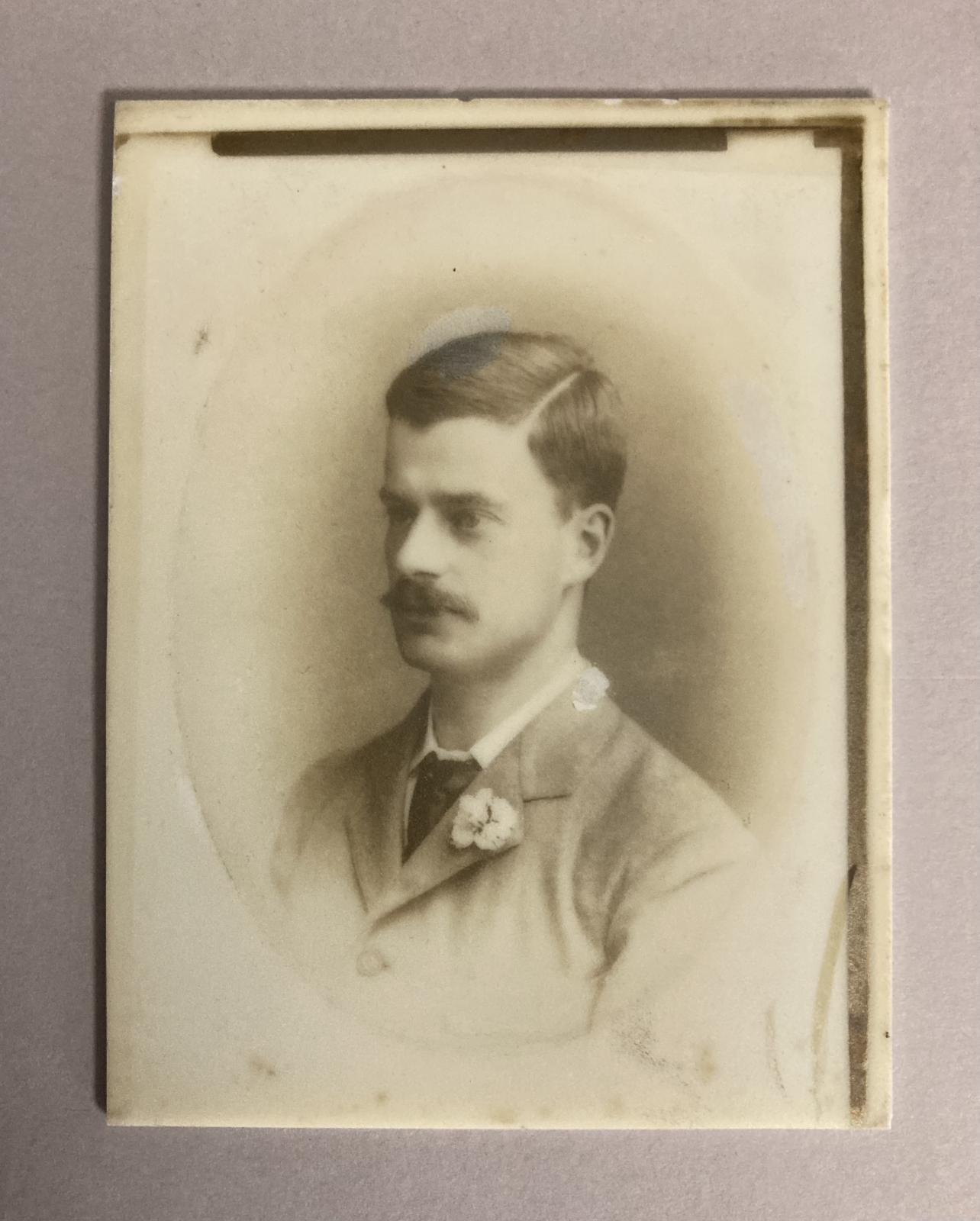PORTRAIT OF DR WILLIAM ELGEE IN FOLDING LEATHER FRAME
c. 1880 - 1906Brown leather folding photograph frame with brass hinged flaps containing a small black and white portrait of Dr William Elgee on milk glass (opalotype).
The side flaps of the frame are lined on the inside with burgundy velvet.
A thin piece of gold metal with cut out oval shape frames the portrait and a clear glass plate protects it.
Two notes on small pieces of white card inside the leather frame read:
1. 'Donated by Dr Michael McCall
Head Gereatric [sic] & Extended Care Dept
Photo belonged to Miss Elgee Daughter of Dr Elgee'
The other side reads:
‘William Elgee
RPH Library would care to have this’
2. 'William Elgee MRCP MACS
Sons of Brig General Charles Elgee
(23rd Regiment of the Hill(?))
Royal Welch Fusilliers
Born Sept 10th 1866 Died 16th March 1907'
Dr William Elgee was born in India in 1866. He qualified as a doctor in 1890 in London and, after arriving in WA in 1892, he served as Resident Medical Officer at the Colonial Hospital for three years. While serving as the Resident Medical Officer, Elgee diagnosed the first case of the 1893 smallpox epidemic - disagreeing with his superior, Colonial Surgeon Dr Alfred Waylen, who initially suspected the patient had German Measles. This three month epidemic led to the hurried establishment of a tent quarantine site in West Subiaco that became the Victoria Hospital and eventually the Shenton Park Rehabilitation Hospital. In 1900, Elgee was elected mayor of Midland and practised till his death in 1907.
Details
Details
In February 1893 the SS Saladin sailed into Fremantle from Singapore. A Malaysian sailor named Ibrahim was aboard on his way to the goldfields. Ibrahim found work as a servant in a boarding house on Adelaide Terrace. In March he began to feel unwell and was admitted to the Colonial Hospital where doctors were puzzled by his rash. Dr Elgee diagnosed his illness as smallpox.
After treating Ibrahim, nurse Agnes Seymour showed the first symptoms of smallpox.
By April, with the number of smallpox cases growing, a quarantine tent hospital was set up in bushland west of Subiaco to isolate infected patients.
While still recovering, Nurse Seymour cared for patients in the secluded tent hospital along with a handful of other young nurses and orderlies.
The tent hospital grew to become the Infectious Diseases Hospital, the Victoria Hospital, and later the Shenton Park Rehabilitation Hospital.
The Infectious Diseases Hospital provided care for patients with smallpox, typhoid, diphtheria, influenza, measles and scarlet fever. Later it became a centre for patients with polio.
This item is associated with the foundation of the Smallpox Camp west of Subiaco which became the Victoria Hospital and later Shenton Park Rehabilitation Hospital site. It has interpretative potential for exploring the history of infectious diseases and infection control. It is a rare, original photograph of a Colonial Hospital doctor on opalotype or milk glass, a photographic technique that was not widely used.


Scan this QR code to open this page on your phone ->
